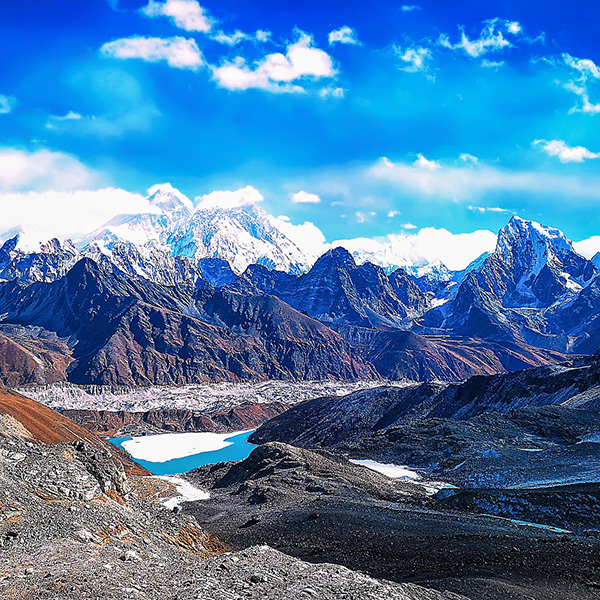
Weather patterns and human activities on Earth may be affected differently by the melting of Antarctic glaciers and Arctic ice.
By reflecting sunlight back into space, the Arctic ice plays a significant part in regulating the climate of the planet. When the ice melts, the water absorbs more of the sun’s energy, thus warming and melting the ice. This may result in a positive feedback loop that amplifies the effects of global warming. Therefore, the melting of the Arctic ice could result in more extreme weather patterns, such as heatwaves, droughts, and more powerful storms, which could have an impact on infrastructure, agriculture, and transportation.
On the other side, the melting of Antarctic glaciers may cause sea levels to rise, which may have a major effect on coastal areas and low-lying islands. Higher sea levels may result in flooding, erosion, and saltwater intrusion, which may harm or destroy infrastructure including roads, buildings, and other structures, forcing people to relocate and decreasing economic output. In addition, the melting of the Antarctic glaciers has the potential to alter ocean currents, altering precipitation, wind patterns, and ocean temperatures, among other aspects of the climate. Affected human activities like fishing, tourism, and shipping may be caused by changes to marine ecosystems and the availability of resources like fish and other marine species.
In summary, the melting of the Arctic ice and the glaciers of the Antarctic can have different effects on weather patterns and human activities on Earth. The melting of the Arctic ice can cause more extreme weather patterns, while the melting of the glaciers in the Antarctic can lead to rising sea levels, which can impact coastal regions and low-lying islands. Both of these changes can have significant impacts on human activities and the natural world.
Hindi Answer
आर्कटिक की बर्फ और अंटार्कटिक के ग्लेशियरों के पिघलने से पृथ्वी पर मौसम के पैटर्न और मानव गतिविधियों पर अलग-अलग प्रभाव कैसे पड़ता है? व्याख्या करना।
अंटार्कटिक ग्लेशियरों और आर्कटिक की बर्फ के पिघलने से पृथ्वी पर मौसम के मिजाज और मानवीय गतिविधियां अलग तरह से प्रभावित हो सकती हैं।
सूर्य के प्रकाश को वापस अंतरिक्ष में परावर्तित करके, आर्कटिक की बर्फ ग्रह की जलवायु को नियंत्रित करने में महत्वपूर्ण भूमिका निभाती है। जब बर्फ पिघलती है, तो पानी सूर्य की अधिक ऊर्जा को अवशोषित करता है, इस प्रकार बर्फ को गर्म और पिघला देता है। इसका परिणाम एक सकारात्मक फीडबैक लूप हो सकता है जो ग्लोबल वार्मिंग के प्रभावों को बढ़ाता है। इसलिए, आर्कटिक की बर्फ के पिघलने से अधिक चरम मौसम के पैटर्न हो सकते हैं, जैसे कि हीटवेव, सूखा और अधिक शक्तिशाली तूफान, जो बुनियादी ढांचे, कृषि और परिवहन पर प्रभाव डाल सकते हैं।
दूसरी ओर, अंटार्कटिक ग्लेशियरों के पिघलने से समुद्र का स्तर बढ़ सकता है, जिसका बड़ा प्रभाव तटीय क्षेत्रों और निचले द्वीपों पर पड़ सकता है। उच्च समुद्र स्तर के परिणामस्वरूप बाढ़, कटाव और खारे पानी का प्रवेश हो सकता है, जो सड़कों, इमारतों और अन्य संरचनाओं सहित बुनियादी ढांचे को नुकसान पहुंचा सकता है या नष्ट कर सकता है, जिससे लोगों को स्थानांतरित करने और आर्थिक उत्पादन कम करने के लिए मजबूर होना पड़ सकता है। इसके अलावा, अंटार्कटिक ग्लेशियरों के पिघलने से जलवायु के अन्य पहलुओं के साथ-साथ समुद्र की धाराओं में बदलाव, वर्षा, हवा के पैटर्न और समुद्र के तापमान में बदलाव की क्षमता है। मछली पकड़ने, पर्यटन और नौवहन जैसी प्रभावित मानवीय गतिविधियाँ समुद्री पारिस्थितिक तंत्र में परिवर्तन और मछली और अन्य समुद्री प्रजातियों जैसे संसाधनों की उपलब्धता के कारण हो सकती हैं।
सारांश में, आर्कटिक की बर्फ और अंटार्कटिक के ग्लेशियरों के पिघलने से मौसम के पैटर्न और पृथ्वी पर मानवीय गतिविधियों पर अलग-अलग प्रभाव पड़ सकते हैं। आर्कटिक की बर्फ के पिघलने से अधिक चरम मौसम पैटर्न हो सकता है, जबकि अंटार्कटिक में ग्लेशियरों के पिघलने से समुद्र का स्तर बढ़ सकता है, जो तटीय क्षेत्रों और निचले द्वीपों को प्रभावित कर सकता है। इन दोनों परिवर्तनों का मानवीय गतिविधियों और प्राकृतिक दुनिया पर महत्वपूर्ण प्रभाव पड़ सकता है।



